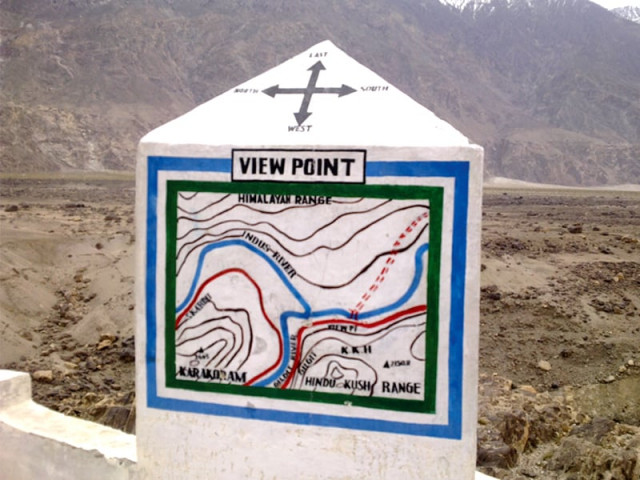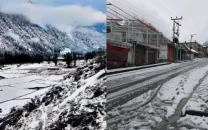An ‘awe-inspiring’ venue getting buried in time and dust
The junction is the converging point of the world’s three ‘mightiest’ mountain ranges.

An ‘awe-inspiring’ venue getting buried in time and dust
Once a tourist hotspot, the junction point of the three mightiest mountain ranges of the world seem to be loosing its appeal.
Situated nearly 45 kilometres from Gilgit, the junction — where the Himalaya, Hindu Kush and Karakoram ranges converge — served as a preferred stopover for tourists, especially foreigners, who would come to take photographs of “awe-inspiring view of the three ranges”.
However, owing to multiple issues, the junction has been unable to draw tourists from some time.
While some locals and tourists suggest that it is because of ongoing expansion work on the Karakoram Highway that has engulfed the area in layers of dust, others opine that it is the fallout of sectarian violence in Gilgit-Baltistan (G-B).
“You cannot even think of stopping here these days as the entire place is full of dust due to the ongoing construction work,” said Jamshed Khan, a resident of Jaglot who often travels to Gilgit.
Niyat Khan, who runs a passenger wagon between Gilgit and Jaglot, concurred. “Stopping at the junction is like stepping into a dust storm and you would end up looking like a dust ball if you stay there for half an hour,” he joked. “I can only hope for the construction to be over soon so that the junction can regain its lost glory,” he added.
Hidayat Ali, a tour operator, said that the place is usually full of tourists, especially during the summers, but the 600-kilometre journey on the bumpy KKH leads people to reconsider.
The expansion work initiated almost three years back lost pace after the floods in 2010, followed by the Attabad Lake disaster.
Abdullah Jan, a senior official of the National Highway Authority, said that the deteriorating law and order situation in G-B has contributed significantly towards delay in the project’s completion, and all the while discouraging tourists from visiting the “magnificent junction”.
According to Akram Khan, who is currently visiting his hometown from UK, the junction is one of the rarest locations in the world that offers spectacular views for tourists visiting the mountainous region. “I have some amazing snaps of the place and I see them whenever I miss my home,” he remarked.
The three mountain ranges feature some the world’s highest peaks. The Himalayan range, nearly 2,400 kilometres long and 400 kilometres wide, forms an arc with Indus river valley in the west and Brahmaputra river — an Asian river that flows into the Bay of Bengal — in the east . The range is also home to Mount Everest, the world’s highest peak. The nearly 500km-long Karakoram Range, which comprises mostly of glaciers such as Siachen, Baltoro and Biafo, is home to Karakoram-2, the world’s second highest peak.
Published in The Express Tribune, May 22nd, 2012.


















COMMENTS
Comments are moderated and generally will be posted if they are on-topic and not abusive.
For more information, please see our Comments FAQ